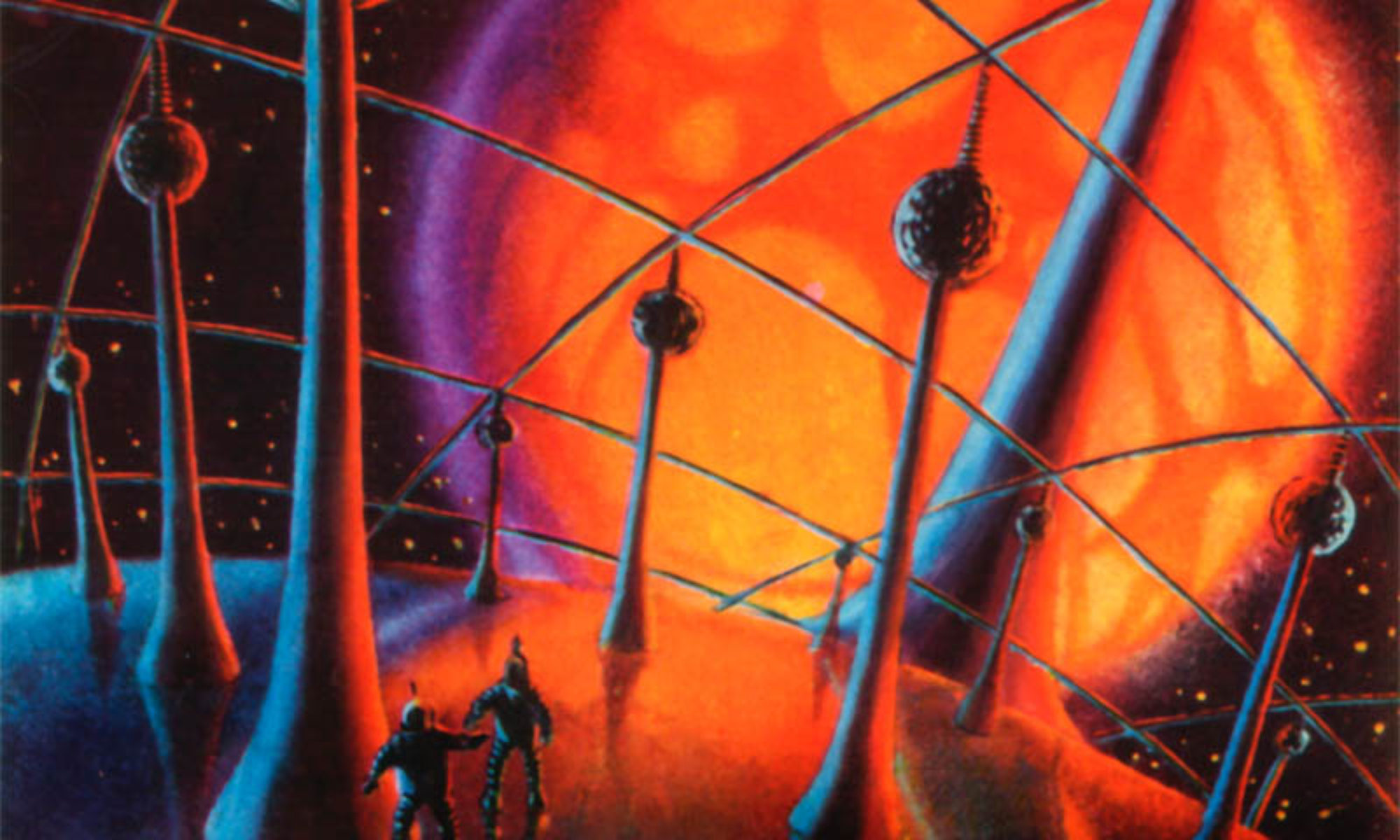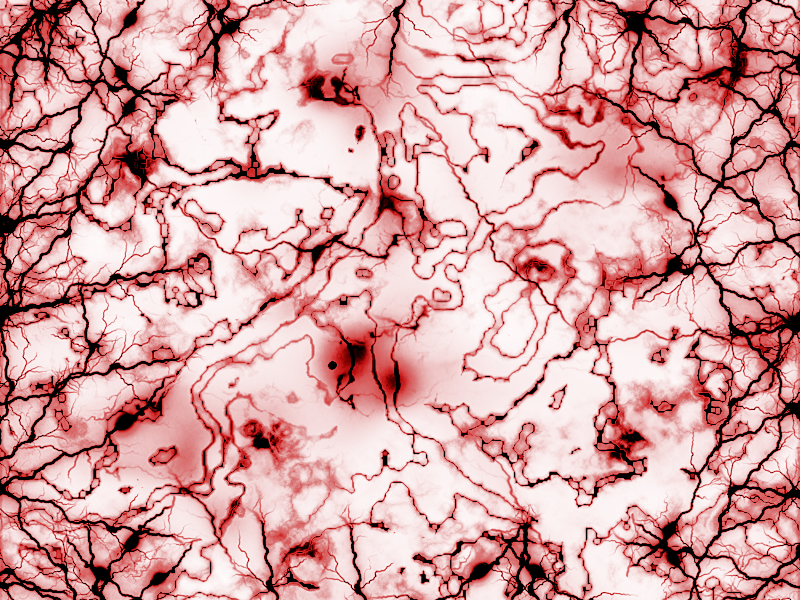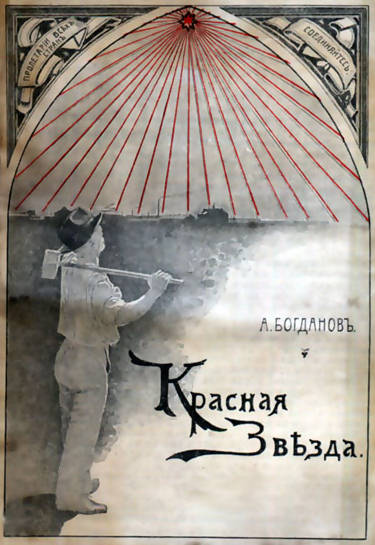The history of the British communist novel is ultimately the story of the political degeneration of the Communist Party of Great Britain. By Lawrence Parker.
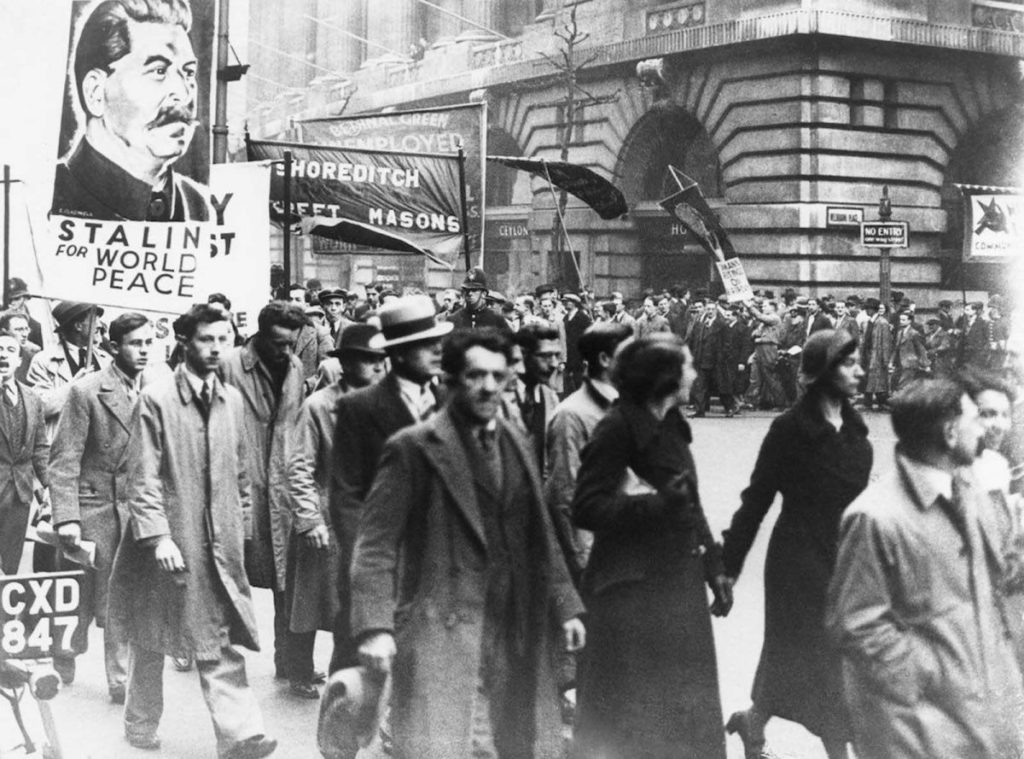
In 1939, Frank Griffin’s1 novel October Day recorded the events of the Battle of Cable Street in 1936, where British fascist leader Oswald Mosley planned to march through the East End before being repelled by a counter-demonstration organized by the Communist Party of Great Britain (CPGB) and others in the labor movement.
One of the characters in the book is an unemployed laborer called Slesser, unwilling to take a job with the local council because of his refusal to join a trade union. After an argument with his wife, he gets sucked into the vortex of the anti-Mosley demonstration, marching and fighting alongside CPGB members before becoming involved in incidents with fascists after the demonstration when being mistaken for a Jew. Griffin’s book is fast-paced, knockabout stuff and it doesn’t go deeply into the modulations of working-class consciousness. But we are left with a strange denouement. By the end of the book, Slesser has reversed his previous outlook on life: “‘I’ve been a bloody fool! I ought to have joined the union years ago. Everybody ought to join a union. Don’t you see?’ he asked passionately. ‘We must all stand together. All us working folks must be organised. That’s the only way we’ll ever fight the bosses, that’s the only way we’ll ever get the rich off our backs.’”2
So, after one day, the anti-union Slesser seems on his way to becoming a communist sympathizer. He has simply been processed by the experience of the demonstration and militant action, buoyed along by events that he initially had very little understanding of; enough that he fairly immediately sloughs off his previous world view. This is mechanistic in the extreme and a mystical, not rational, view of the formation of working-class consciousness. One has to ask whether a character with views such as Slesser would have even gone to Cable Street or, if he had, whether he would have been marching on the fascist side. But Griffin ultimately allows no mediatory role to his character’s consciousness and his views are simply a matter of chance as to where he ended up on the day.
Some of the character dynamics of this novel illustrate the broader tragedy of the CPGB, formed 100 years ago: the manner in which it viewed the British proletariat as an agent of history, its potential increasingly diminished in the ideology of the party down the years.3 This was not solely due to Stalinism; some of it goes back to the conceptions of the early Comintern. One of the means of gauging this collapse in expectations is imaginative, through a selection of the novels that CPGB members wrote about the party and the proletariat. Given that this picture of the British working class was a ‘perfected,’ fictional one, it is a useful means to assess how the party ideally (or not so ‘ideally’ as it turns out) thought about its constituents.4
Decline of a political culture
Although subsequently developed into a peculiar aesthetic by party writers, such a culture was rooted in the failure of the CPGB as a political project in the 1920s and 1930s. The full background is an article in itself, but we can offer some pointers to what happened. If one considers the National Left-Wing Movement (NLWM) and the Sunday Worker newspaper, projects initiated by the CPGB in the mid-1920s to win the rank and file of the British Labour Party to communist ideas, one is struck by the relatively sophisticated political culture that underpinned such initiatives. One could find the working-class readership of the Sunday Worker debating all manner of political and cultural matters in its pages; non-communist members of the NLWM arguing with CPGB members over their interpretation of Lenin’s theory of Labourism; and, after the dissolution of the NLWM by the CPGB in 1929, arguing with the CPGB over the decision. Thus, the programme of the NLWM sought to differentiate the organization from more run-of-the-mill reformist Labour lefts by introducing advanced anti-militarist, anti-imperialist, and anti-monarchist demands, which, of course, relied on a certain conception of its audience as the advanced part of the proletarian class.5 But such a culture was not set in aspic, and because the CPGB was a product of the early Comintern it also denied the internal right to form factions. This had the effect, when it was in the wider labor movement, of an opportunistic tendency to close ranks with other non-communist sections. The differentiation, or ‘unity in diversity’ that it denied to itself internally could thus not be properly advanced externally, without radically undermining the party’s internal regime in the long run.6
By the time the CPGB had started to develop the politics of the Third Period in late 1928 and 1929, the political programme of the NLWM was seen as something to be junked, a barrier to engaging with the working class. Rather, despite the radical verbiage one associates with this juncture in Comintern politics, solace was to be sought in developing ‘immediate’ demands deemed more appealing to workers.7 Despite the shift in rhetoric, this perspective of a politically stunted and simplistic proletariat was carried over into the Popular Front. By January 1936 a leading party member could state: “What are the issues around which unity can be achieved? We are not thinking in terms of a cut-and-dried programme, but those immediate and sometimes changing issues affecting the daily lives of the workers, small shopkeepers and professional people: wages, salaries, hours, conditions, taxation, democratic rights, armament expenditure, the threat of war, etc.”8
This programmatic perspective bred a certain limited view of the proletarians it was meant to address. In other words, more simplistic and immediate programmes meant thinking of proletarians in a simplistic manner, including in the realm of art. Critics included Bertolt Brecht, who castigated these “so-called poetical forms”, in his famous 1930s critique of Georg Lukács. Brecht derided the representation of ‘the people’ “in a superstitious fashion” that“endow[s] the people with unchanging characteristics, hallowed traditions, art forms, habits and customs” such that “a remarkable unity appears between tormentors and tormented…”9 But this was clearly also a political problem lodged in the development of the Comintern throughout the 1920s and 1930s. Similarly, one can discern a coded political critique in Brecht’s complaint: “There will always be people of culture, connoisseurs of art, who will interject: ‘Ordinary people do not understand that.’”10 Brecht drew on his own artistic experience to state “one need not be afraid to produce daring, unusual things for the proletariat so long as they deal with its real situation”.11 ‘Ordinary people do not understand that’ has become the stock refrain of most contemporary Stalinist and Trotskyist groups when political or aesthetic issues are being discussed that clash with their truncated politics. In so doing, they are tiny caricatures of the earlier decomposition of organizations such as the CPGB.
In 1950, the CPGB’s Daily Worker featured a ‘debate’ on poetry in which one reader responded with the fatal words: “For the working class, things are and always have been fairly simple – for the class-conscious workers, extremely so.”12 This is simply a superstition, or even prejudice, on the lines laid out by Brecht. It absolutely jars with many autobiographies of working-class autodidact CPGB members who joined the party not only because of immediate issues such as poverty but often due to a thirst for knowledge and a discerning attitude towards the political and social forms taken by the proletarian movement as a whole. Raphael Samuel argues: “Many, it seems, came into the [CPGB] through reading, sometimes under the guidance of older workers, sometimes by themselves.”13 So, when communist politics were refracted through this fatalist superstition that non-communist workers could only be approached through so-called immediate issues, unmediated by the intellectual life of proletarians, the CPGB partly ran up against its own experiences, which led to a particularly schizophrenic ideological existence.
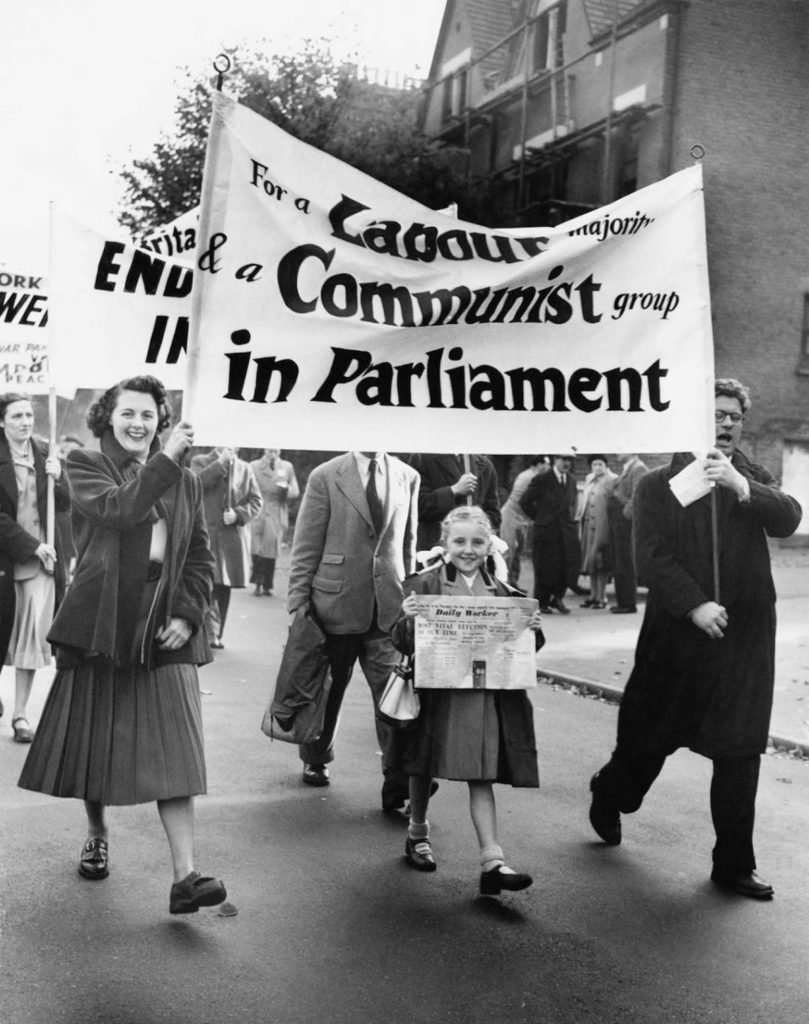
Problems of the British communist novel
Some in the CPGB had a strong inkling that this hadn’t produced strong fictional writing. Writing in April 1962, Margot Heinemann,14 at that point one of the CPGB’s more successful novelists, analyzed how anti-working-class sentiment had found its way into the British communist novel:
The convention that most ‘ordinary’ people are completely without social and political ideas has two sources. Firstly, it is the convention of our rulers, who would like this to be true… Secondly, it is a common sectarian mistake on the part of those who have failed to persuade the workers to adopt the same ideas about reform or socialism as they hold themselves. In this sense communists are not immune from it. The workers in our novels often tend to be quite blank, politically, until they see the light and are changed.15
Heinemann goes on to make a funny parody of the kind of dialogue this leads to in the communist novel: “‘I never realised till I met you, Jock, that our factory’s just part of something bigger – much bigger. You’ve made me see we can all do something to change things.’” She adds: “Let’s face it, if the lad didn’t know that much before he was something of a sap.”16
While the description of what had happened to working-class characters in such literary work was acute, the explanation of how this had come about was noticeably abstract in the negative sense. This manner of characterization is implicit in the degeneration of the CPGB’s political culture through the 1920s and 1930s and its low expectations of the British proletariat. Heinemann uses a common trope of the CPGB leadership of the time about this being partly the fault of ‘sectarians,’.There were indeed small groups of ‘proto-Maoist’ activists in the party of the early 1960s: pro-Stalin and, paradoxically, holding some militant revolutionary ideas of one sort or another that this label was meant to describe. However, to blame such people for this view of the working class, when it was lodged in the whole dynamic of the CPGB’s ideological development, was simply a conservative thrust by Heinemann to protect her party and the leadership of which she was a part (as we shall see, this bled over into her art).
Non-communist proletarians were depicted in CPGB novels ‘naturally’ and ‘realistically,’ often as intrinsically non-political and simplistic; to be marched on and off the stage as the strike or demonstration demanded, with such mass action (rather than any use of political reason or understanding on the part of these proletarians) imbued with almost mythical qualities to resolve contradictions in working-class consciousness and push it towards a communist denouement. Many of the novels by CPGB members did include communist characters, sometimes interesting ones, but the issue was usually the emaciated picture of proletarian culture that such writers drew overall. This left communist characters in a kind of strange artistic limbo, sometimes floating like driftwood in a sea of working-class ‘slum-life’, and led to the party itself complaining that such communist characters were ‘preachy’ and the like.17 In fact, when such characters were composed in front of this unpromising and simplistic backdrop, it would have been very hard for them not to sound ‘preachy’ and alien.
This immersion in what CPGB writers saw as the main features of working-class life was clearly an attempt to evade ‘subjectivism’: the imposition of any ‘ideal type’ of proletarian consciousness, i.e. a perfected revolutionary world view, onto non-communist working-class characters. Instead, such writers immersed themselves in the tendency of working-class life to reject such forms. This rejection led them to straight back into subjectivism in that their view of a primitive working-class consciousness was just as invented as the ‘ideal type’ they rejected. They thus mirrored what Adorno saw as the error of constructivist art: “They treat as a pure natural force something which is only a human will concealed from itself.”18 For Adorno, the anti-subjectivism of constructivist art led back to another type of subjectivism, which meant that the subject, the creator of the art, overlooked her own presence in its production. CPGB writers concealed from themselves that an ‘objective’ description of a simplified proletariat was in fact their party’s own highly partial expression of the deterioration of its politics in the 1920s and 1930s. But the outcome of this subjectivism was seemingly perverse in that the subjects of this writing (the CPGB’s published and aspiring writers) found themselves cast off and adrift from their own creations, and, as alluded to by Heinemann above, stuck inside endless modulations on the more prosaic features of working-class culture and how their party could relate to it.
What follows is a compressed and partial analysis of some examples of CPGB novels that follow this course of undermining the potential of proletarian subjectivity. A clear pattern does emerge but I am aware of the danger of such patterns and to that end I have also looked at some British communist novels from the 1960s, when this pattern started to disintegrate and a partially progressive notion of working-class subjectivity (and, concurrently, a more critical view of the CPGB) began to emerge in the work of Margot Heinemann and Edward Upward.19 This late emergence underlined the tragedy inherent in the form that the CPGB novel had taken hitherto.
Harold Heslop, Last Cage Down
Harold Heslop’s20 novel, Last Cage Down (1935), was a fictional work that explored class struggle in the Durham coalfield. It centers on the conflict between a headstrong and individualist lodge secretary, James Cameron, and a rank-and-file communist miner, Joe Frost, who turns out to be the more farsighted of the two. The book had an interesting reception by the CPGB in 1935, which deemed that it exhibited some of the sectarian politics of the Third Period as opposed to the Popular Front that the party was then embarking on.21 In the Popular Front, in practice, there was a shift from the excoriation of non-communist leaders in favor of more diplomatic relations with such forces. In fact, this was a formalist misreading of the work as a whole, where the steady and more calculating influence of the communist Frost was counterposed to the headstrong weakness of lodge secretary Cameron.22
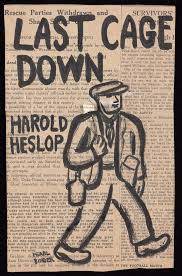
But the book also partially looked back to the remnants of the critical proletarian culture that the CPGB had once fostered in the 1920s. The communist Joe Frost is talking to a group of miners and a critic of the CPGB speaks. Frost lets him continue but this is the third-person narrator’s view: “Joseph Belmont took the floor. Meet Joe in his thousands all over the working-class world, the little bibber at the fountain of philosophy, who annoys friend and foe, who is libelous of all things with which he does not agree. Young Mister Trotsky.”23 So, critical voices in the working-class world are equated with someone being portrayed in the world communist movement of the time as a traitor. This derogatory view feeds off Heslop’s politically paralyzed view of miners as a group: “The miner in the mass doesn’t worry about Marx, nor does he take extremely kindly to the men who talk about mysteries contained in books.”24 One wonders where this then would leave the communist project given that CPGB members spent large amounts of time unraveling the “mysteries” of esoteric books, and in what particular state of self-loathing such lines left Heslop himself. But the bigger mystery would then be how communists politics can be related to such workers.
In Heslop’s world, the production of a socialist idol25 such as Georgi Dimitrov, who had been acquitted from the 1933 Leipzig Trial after spurious Nazi accusations of his complicity in starting the Reichstag Fire, was enough to act as a point of revelation whereby communist and non-communist could be enjoined. Frost only had to say the name ‘Dimitrov’ to a group of miners with whom he was discussing what could aid them in struggling against reformism for this to happen:
And they all became silent. It was a moment when the great heroism of one of the noblest creatures in the world stood amongst them, a moment filled with the sweet poignancy which is the workers’ share of the joy of the earth. In far-away Leipzig, amongst the howling wolves of the world’s worst form of fascism… stood one, a worker, fearless of the headsman’s blade poised above his upturned face… Could it be possible that so great a miracle of heroism existed? Dimitrov lit up their world and sent that great, hopeful shudder thrilling through their spines, and stimulated their love of their own class, their pride in their own class.26
Even in a novel that was able to illustrate some worthwhile notion of proletarian consciousness such fawning prose would be highly suspect. (Dimitrov’s acquittal was, in any case, something of a Comintern-inspired ‘booby prize’ when measured against the catastrophic destruction of the German workers’ movement.) The idea of miners with no communist ideas suddenly lit up by the mere mention of Dimitrov’s name is a mythical and ultimately absurd view of working-class people that sees them as mere dupes of an external mysticism.
John Sommerfield, May Day
John Sommerfield’s27 May Day (1936) was much more experimental than the previous two works, charting 48 hours in the life of London, culminating in a vast demonstration, led by the CPGB and its slogans: ‘All out on May Day! For a free Soviet Britain!’ The work cuts in around 90 named characters, which leads to an impressive and suspenseful montage of the city’s life. Like a British John Dos Passos, Sommerfield’s modernist technique looks forward, but his view of proletarian consciousness looks backward, to the deformed view that the CPGB had developed since the late 1920s. This then is how Sommerfield describes female factory workers:
These silly girls with their synthetic Hollywood dreams, their pathetic silk stockings and lipsticks, their foolish strivings to escape from the cramped monotony of their lives, are the raw material of history. When their moment of deep discontent comes to them in a mass, taking form in the words of their class-leaders, then there are revolutions. What happens to the revolutions depends upon other factors – automatic lathes for instance.28
So here we have raw material to be prodded about, processed; whose discontent comes in a singular moment that can be harnessed by the party. Rational thought seemingly plays little or no part in such processes, except as a reaction to circumstances. Sommerfield repeats this emaciated view of the proletariat in his short chapter ‘The Communist leaflets,’ concluding on the topic: “There should have been more.” Why? Because of the essentially apolitical and deluded nature of the London proletariat, hung up on “dograces and bicycles,” pondering “the forms of horses and boxers and filmstars”, and pumped full of newspapers and speeches in parliament about democracy.29 By that token, the CPGB’s leaflets became merely another quantifiable thing prodding this inert mass into action. They just needed more of them.

When Sommerfield turns his attention to the qualitative shifts in the consciousness of London proletarians, we are not quite caught up in Heslop’s strange metaphysics, where proletarians are simply lit up by the example of socialist idols, but we are still in a world where the collapse into an agreement with the CPGB is all too straightforward, as shown by the following dialogue:
“‘That’s what I don’t hold with about the communists,’ said John. ‘They’re always on about Russia – not that I’m against Russia; it’s fine there and good luck to ‘em… But what I want to ‘ear about is how we can get things better ourselves instead of how good they are somewhere else.’
“‘That’s what this feller said though. He said there’s only one way of getting decent conditions for ourselves, to do [the] same as they did in Russia – kick out the bloody bosses and it can’t be done through voting either. ‘E said it was different here to Russia. Course it is, it’s much harder for us to win ‘cos our bosses are so strong. Only once we’ve got power we’d be able to go ahead easily ‘cos everything’s organized already and there ‘r so many factories and everything…’
“‘That’s true… I’m on their side all right, always have been. I never took a’ interest in politics, I always thought the Labour Party’s no bloody good for us…’”30
The objection that Britain wasn’t Russia was one that many CPGB members would have heard, particularly from members of the Labour Party, who used this argument to undercut appeals for revolutionary violence. But in Sommerfield’s dialogue, such an apparent objection is only a mere byway into an agreement with the CPGB. This simplified and schematic view of consciousness was the product of how the CPGB, and Sommerfield, saw the revolutionary process unfolding in Britain. Towards the end of May Day, a communist, James, muses upon the demonstration to come: “I know too that we are setting out on a road whose inevitable end will be a moment when we stand with guns in our hands and thinking the thoughts of death and revolution.”31 But then if strikes and demonstrations do indeed send proletarians out to this inevitable end, it becomes clear why Sommerfield’s essentially irrational picture of working-class consciousness can stand, simply because, in this schema, rational thinking is redundant. It’s okay to picture proletarians as being prey to the charms of dog racing and film stars because the struggle will ultimately decide all.
Arthur Calder-Marshall, Pie in the Sky
This relative decimation of working-class subjectivity reaches a derogatory low point in Arthur Calder-Marshall’s32 Pie in the Sky (1937), which, like May Day, attempts to paint a kaleidoscopic picture of British society using a variety of narrative techniques, with ‘stream of consciousness’ being used alongside more traditional linear sections. In conversation, the communist Turlin says of the working-class masses: “It’s drink or sport with the men and films and men with the women. Who can blame the capitalist for exploiting the working class, while the working class is begging to be exploited?” Turlin further characterizes proletarians as sheep “trotting into the slaughterhouse and holding up their necks for the knife”. This accounts for his partial feelings of helplessness as a communist, “as if we’ll never pull it off”.33
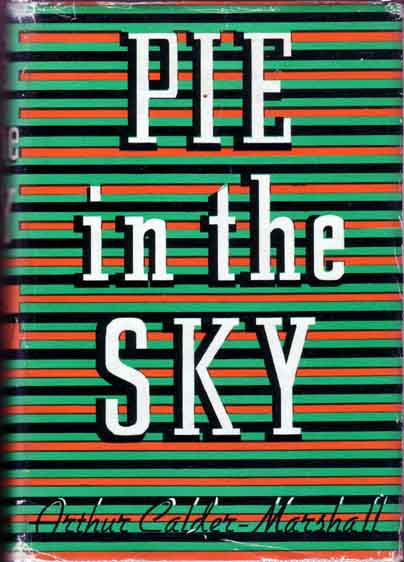
But then Calder-Marshall is faced with a familiar problem as a communist novelist: how can the party relate to this type of beleaguered consciousness? As with Heslop’s Last Cage Down, we are thrown back into the arms of mysticism, but rather than workers being lit up with the example of socialist idols, in Pie in the Sky, it is the communist who is lit up by the almost unearthly power of workers drawn together in a mass. Turlin speaks to a march about housing conditions:
It was no longer Turlin on the platform, not the pale man doubting his power. It was no person, but a voice and a fling of arms. He drew from the crowd his power to speak. His words came not from his brain but theirs; his body merely an instrument, a huge mouth. And as if it was their brain and not his, the thoughts were at first rough comparisons. There seemed to be no connection of logic, nothing linking one sentence to the next. But as he proceeded, the pattern began to become plain: like a man struggling to shape his thoughts and shaping them. It began to become plain, the need to fight for the class, because only in mass is the counterweapon to wealth and influence and armed force.34
Calder-Marshall takes a partial truth, the power of the mass, and turns it into an absolute. But the power of Carlin’s speech does not begin with logic or rationality; the speaker finds his way into it, compelled by the almost supernatural power of the ‘crowd brain’ before him. When the early Comintern was more concerned with emphasizing ‘unity in diversity’ (rather than the type of abstract unity presented by Calder-Marshall), it understood the problems of this type of rhetoric, speeches taking shape on the hoof, as being prey to opportunism and spontaneity.35 By 1937 this type of political culture had been smothered in the CPGB and this imagined somnambulism on the part of communists was seemingly acceptable. Also, one must stress that this submerging of characters into a proletarian crowd only compounds the issue of working-class characterization, given that this unearthly power leads to the notion of an undifferentiated mass, excluding any notion of qualitative difference or ‘unity in diversity’. Communist proletarians were obviously different from non-communist proletarians. But that did not exclude qualitative relations between the two, unlike the strange notion of communists talking through the collective brain of the proletariat.
Novels of the Popular Front
Our first four examples of British communist novels have been culled from in and around the period of the Popular Front. On the surface, one would have thought this supposedly ‘non-sectarian’ segment of the history of the world communist movement would have led to a richer and more empathetic view of the British working class. This seems to be the assumption of Elinor Taylor’s recent work on the Popular Front novel. She argues, in line with the ‘wisdom’ that the CPGB itself emoted on the subject: “The formal adoption of the Popular Front strategy marked a decisive and dramatic shift from the Comintern’s earlier, ultra-sectarian ‘class against class’ line, which had demonized non-communist elements as ‘social fascists’ and forbade communists from seeking alliances.”36 This positive appreciation of the Popular Front leads Taylor into enthusiastic appreciations of some of the novels that communists produced in this period.
Regarding May Day, Taylor comes to the opposite conclusion to myself: “In spite of Lukács’s rejection of montage as fragmentary and incoherent formalism, Sommerfield’s montage articulates a model of the relations between the parts and the whole that is essentially congruent with Lukács’s version of totality.”37 In such a view of totality, the parts, the human characters, can play a role in the construction of the ‘whole’ historical process. Lukács thought narrative modes such as montage only offered an essentially fragmented picture of human consciousness, buoyed along by the historical process instead of helping create it. Taylor is right in one sense that the practice of montage does not preclude artists producing a richer picture of reality, and it is true that Sommerfield produces a ‘totality’ of sorts. But May Day’s totality is underpinned by a model of working-class consciousness that is apolitical and irrational, where essentially bovine workers collapse into the arms of the communists under the pressure of the ‘inevitable’ exigencies of the immediate struggle. It would have been a miracle if this had produced the expressive totality pictured by Lukács in works such as The Historical Novel (1936), with richly illustrated and epoch-making characters infusing the historical process with their own sense of rationality and mission. Instead, the proletarian characters in May Day are merely ‘part’ of a dead schema that precludes their rationality from the outset.
But that should be no surprise. The Popular Front was not premised on any dramatic change in the incremental manner in which the CPGB viewed the process of working-class consciousness. As we have seen in the introduction to this article, this emaciated and apolitical view was also present in the politics of the Third Period and also arguably went back to the circumstances of the CPGB’s foundation and its ban on factions. Organizations that could not allow internal ‘unity in diversity’ were unlikely to be able to extend it externally in the wider labor movement. Hence, the Popular Front, with its emphasis on diplomatic unity between communist and non-communist, and the denial of the means for organizations such as the CPGB to act critically alongside bloc partners, only made explicit tendencies inherent in the Comintern from the outset.38 And it was this tendency to homogeneity that lay at the root of the homogenized picture of the working class that then developed; of a mass that had seemingly no political memory and was precluded from logical thought. Proletarians using their reason and with a political memory that simply couldn’t be collapsed into that of the CPGB would, of course, have the premise of heterogeneity; a real ‘unity in diversity’.
So, there was no way for these novels to develop any kind of fruitful relationship to ‘the real’, given that their production was so obviously premised on a subjectivized view of the proletariat.39 Such practice had nothing to do, in the cases of Sommerfield or Calder-Marshall in particular, with the use of modernist literary modes such as montage or stream of consciousness. Rather, the lamed and incremental notion of proletarian consciousness, which was the product of the CPGB’s ideology, led such works into the arena of subjectivism. The outcome of this was to foreground the literary experimentation found in May Day and Pie in the Sky and reduce it to a similar synthetic level, choking off any aspiration the authors may have had to represent ‘the real’. In the examples from Heslop and Griffin, their subjectivism, in the relative absence of such experimentation, was merely the herald, in Heslop’s case most obviously, of a rather hysterical propagandism.
Jack Lindsay, Betrayed Spring
Jack Lindsay40 was one of the CPGB’s relatively more heterodox writers and had crossed swords with the party bureaucracy over his idiosyncratic views in the immediate post-war period.41 It is disappointing then to read a novel such as Betrayed Spring (1953), which displays a familiar distorted conception of proletarian consciousness. This novel was part of Lindsay’s ‘British way’ series, essentially a fictional rationalization of the CPGB’s reformist and nationalist British Road to Socialism programme that had been launched in 1951 (although its politics had developed earlier, during the CPGB’s initial support for the post-war Labour administration).
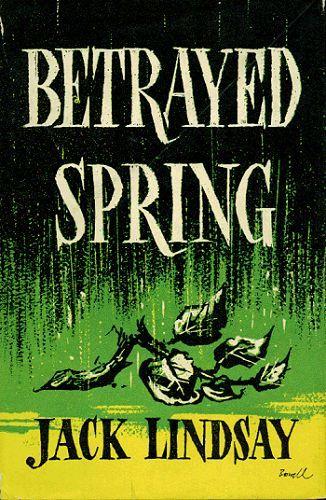
Despite Lindsay’s previous heresies, he does seem to have seen the series as a conscious party enterprise and the front piece lists a number of CPGB names who had advised him. Although Lindsay didn’t tread any new ground in relation to this discussion, Betrayed Spring is pertinent because he spelled out, in an exceptionally clear fictional form, how the CPGB envisaged the development of working-class consciousness. The novel centers on a young working-class woman from London, Phyl, who has been through the experience of the mass squatting movement, attends a demonstration of striking hotel workers in central London:
“She wasn’t sure what the cause was in its full working-out, what the big words implied when the march was ended and the strike was won; but she felt the meaning of it all inside her, in the deep determination and happiness that gripped her, the pride of being there in the defiant march..”42
So, rationality is placed as the antithesis of the emotional impact of the march, given that Phyl doesn’t apparently understand all of the implications of the cause she is supporting. Again, we have this alienated power of the mass on the move to spark proletarian political virgins into life. This is no accident on the part of Lindsay, and he underlines Phyl’s response as she listens to the speeches at the end of the march: “And once more she felt herself part of this great thing which she only partly understood but which had entered irretrievably into her life.”43 Lindsay also extends this impact to the crowd around Phyl: “… the sunlight was sparkling over the myriad faces, while the voice flowed on, like the truth of struggle suddenly becoming articulate in all the dumb mouths of the world. The world within the world, the ghosts of the future taking body as the familiar comrades of everyday light.”44
Now, “the truth of struggle suddenly becoming articulate in all the dumb mouths of the world” is pretty prose indeed but its alliance with such a partial and intensely ideological view of the “dumb” working-class being impregnated with external signs, merely foregrounds the retreat of Lindsay’s articulate prose into the realm of a mere literary effect; a reconciliation with an alien ideology.
Towards the 1960s
With the 1960s looming, there were a number of interlinked factors that made the continued production of decimated working-class subjects in communist novels problematic and old-fashioned. As the CPGB’s Heinemann had noted in the previously quoted article, there were, by the time she wrote the piece in 1962, a group of non-communist writers such as John Braine, Alan Sillitoe, Colin MacInnes and others who had begun to popularise stories of proletarian life (although this type of novel wasn’t a post-war invention). One can’t quite imagine the muscular and engaged working-class characters of authors such as Sillitoe being jolted into life by strikes and demonstrations and swooning into the arms of communists.45 By comparison, proletarian characters in communist novels merely seem pinched and wooden.
By the early 1960s, the CPGB’s whole Soviet-inspired aesthetic of ‘socialist realism’ was in retreat and had indeed been under attack by CPGB sympathizers such as John Berger in the party’s Artists’ Group since the death of Stalin in 1953.46 Many of the artistic ‘categories’ associated with Stalin’s cultural commissar Andrei Zhdanov were in the process of being emptied out and questioned, and such processes were given added urgency by the events of 1956 when, after Khrushchev’s denunciation of Stalin and the invasion of Hungary, more communists would question the CPGB’s subservience to concepts of Soviet provenance. This meant that the party’s whole aesthetic, as far as it had one, was up for interrogation.
But the events of 1956, when the CPGB was wracked by internal crisis as party members faced up to the fact of their organization’s subjection to an anti-working-class dictatorship, also offered a dilemma to communist novelists. If the CPGB was henceforth going to be portrayed in fiction it would be fairly untenable that some notion of this crisis would not appear in such ‘realist’ productions. This pressure can be seen in Herbert Smith’s otherwise unmemorable A Field of Folk (1957). This was fiction largely on the old communist pattern: shop-floor drama in a west London engineering factory providing the basis for the British Road to Socialism. But world political events had now intruded and couldn’t entirely be left behind, even as they were being over-run by events in the factory. A communist character, Tom Barrett, listens to the criticisms of a non-communist, Blackman:
It’s no good you [Barrett] hammering away at wages and housing and pretending that the political doesn’t exist. You still seem to think our kids haven’t any shoes; your slogans are way back in the ‘thirties. You just refuse to admit that our standard of living’s advanced – and you don’t like mentioning the fact that more of us are worried about what’s happening inside Russia than we are about where the next meal is coming from. The problem’s political, not economic. We’re getting a fairer deal from capitalism – but what sort of deal is socialism giving the Russians? 47
Smith seems to be implying from Blackman’s dialogue that there is now a political problem in an obsessive concentration on shop-floor ‘bread-and-butter’ issues. Non-communist proletarians are quite capable of making political judgments about the Soviet Union and the CPGB had to confront that fact in the aftermath of 1956. In some ways, this reads like a meta-critique that encapsulates the problem of the British communist novel (although surely unconscious). Notice how the acknowledgment of the CPGB’s crisis has been acutely diagnosed by a rational and thinking proletarian: the party crisis necessitates the latter, as there wouldn’t have been such a crisis in 1956 if the CPGB had been faced by an unthinking working-class, ruled by shop-floor spontaneity.
Margot Heinemann, The Adventurers
Margot Heinemann’s The Adventurers (1960) is meant to be the definitive turning point against the old type of British communist novel. In one rather bold account: “The Adventurers marks the end, in Britain at least, of the confident chase after socialist realism in fiction.”48 It may have been the end of a “confident chase” but it wasn’t quite the end of the chase. One of the key facets of ‘socialist realism’ was the production of cultural works that had some political utility for the communist movement. A careful reading of The Adventurers shows an author inclined towards critical and rational working-class characters dealing with at least some aspects of the CPGB’s problematic history (as partly illustrated by her “Workers and Writers” article from 1962 quoted above), while also being caught in a movement that was defensive of the party. It also has to be said that the book reproduced some awful CPGB tropes that haven’t aged particularly well.
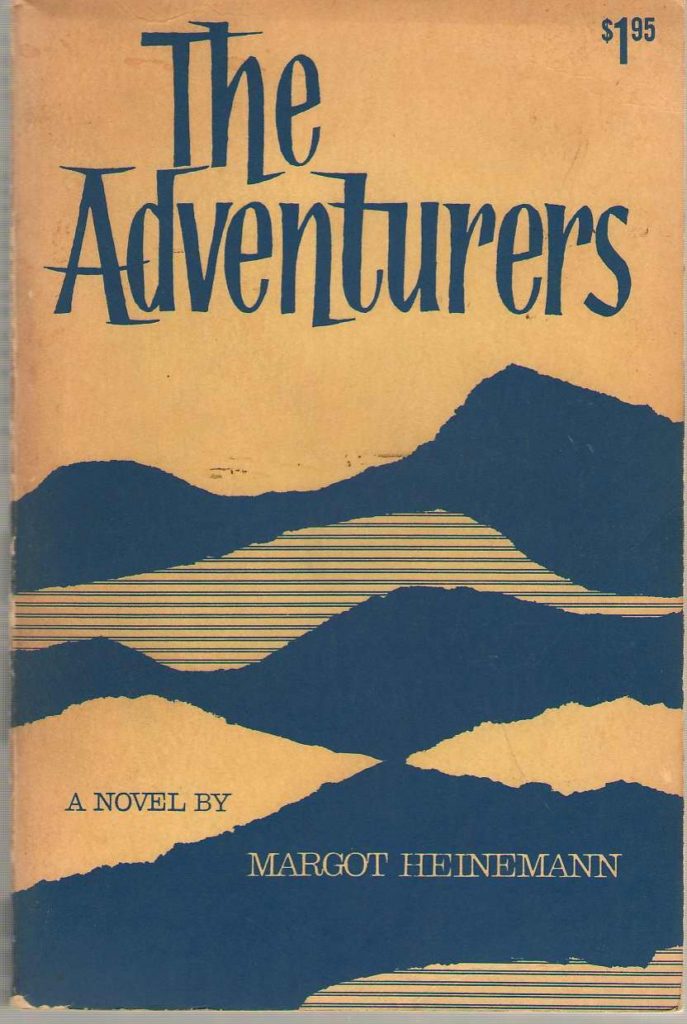
For a CPGB recovering from the traumas from 1956, a novel that dealt with some of that crisis, while retaining the party’s honor and with a more nuanced sense of working-class characterization, was useful and generally well-received by non-communist reviewers. Not that the CPGB’s leadership, which had come to expect simplistic party novels of the type analyzed above, was completely happy with The Adventurers.49 Nevertheless, the book had a certain utility familiar to ‘socialist realism’. It also pays to remember that Heinemann had no particular record as an oppositionist inside the CPGB in the immediate post-war years and was a trusted member of the party bureaucracy. In the inner-party controversy around the works of Christopher Caudwell of 1950-51, Heinemann was among those on the orthodox wing denouncing the ‘idealism’ of books such as Illusion and Reality.50
The tropes that Heinemann uses in places are familiar CPGB ones where other trends in the labor movement were simply denigrated. The following example from The Adventurers explores attitudes to the Second World War and the issue of conscription into the mines: “Of course Jack Marvin says why worry, it’s a capitalists’ war anyway. But Marvin is a bit of a spouter and not a very good workman at that, the boys don’t go all that much on Jack.”51 The implication here is that Marvin is a Trotskyist and, naturally, he wouldn’t be a good worker or have any support among the workers because that was a classic CPGB trope about Trotskyists.52 On similar lines, the character Tommy attends the annual Trades Union Congress: “Coming out of the hall the brilliant sunlight hurt your eyes. Tommy pushed through the swarm of literature sellers thronging the approaches – beaky, dark young men with Trotskyist weeklies, ladies with white bobbed hair and pacifist monthlies, men with open shirts and cycle-clips shouting the Daily Worker…”53 In retrospect, this is fairly crude stuff. The “beaky, dark” young Trotskyist men (a trope that recalls an older habit from the Soviet purges of equating opponents with deformed animal life), up against the dynamic, thrusting sellers of the Daily Worker (the CPGB’s paper), with their easy “open shirts” and “cycle-clips”, ready no doubt to pedal quickly down the British Road to Socialism. So, The Adventurers does have an amateurish undertone of familiar political smears.
Heinemann, however, picked up the direction that Herbert Smith had partly traveled. Dialogue between communists and non-communists did contain an element of conflict that wasn’t easily collapsed into the communist position, despite the author’s obvious predisposition to rationalize the line of the CPGB in places. A good example is given in a conversation between Dan (a non-communist Welsh miner’s son, who goes on to ‘Keir Hardie’ college in Cambridge, and then to a career in journalism) and Richard and Kate (communist Cambridge students). The conversation develops through a discussion of France in 1944 and the reasons why it didn’t have a revolution. Dan largely accepts Richard’s argument that all the French communists could do was “hand over the guns and join the regular armies to finish off Hitler”.54 The conversation then develops through Richard’s line that the US now dominates Europe which Dan disagrees with. The discussion then moves through another point of consensus on the need for the working class to have patience in its struggles before Richard argues that workers are satisfied with so bloody little. To which Dan replies: “They’ve got some things here the Russians haven’t got though… Those Soviet women that married British lads, for instance, and the Russians wouldn’t let them come out here…”55 Richard initially dismisses this argument as a press stunt before stating: “I’m a communist because of what I do know about Britain and France and Spain – not what I don’t know about Russia. If there’d never been a Soviet Union I’d still be a communist.” It is Kate who finishes with the killer line: “That’s what you think… You mightn’t have had the chance.”[Ibid p99.[/note]
In this passage, the working-class character Dan uses his reason to argue against elements of the communist line. The argument passes through points of consensus and conflict. Dan’s suspicion of the CPGB and the Soviet Union is unabated and this feeds into his later development as a journalist, where he eventually collapses into the prevalent Cold War anti-communism of his trade. Nevertheless, it does strike the reader that this conversation is displaced, being more concerned with the CPGB’s crisis after 1956 than with its supposed setting in the 1940s. After the unflattering revelations that appeared in 1956 about the Soviet Union, the CPGB had an official position of stressing that it was an independent British organization, while still being broadly supportive of the Soviet Union and much of its historical record. This is actually reproduced by Richard and Kate: Richard says he is a communist in spite of the Soviet Union, while Kate reminds him that he might owe a lot more to the Soviet Union than he thinks. It was clever of Heinemann to work this in through a point of disagreement, but the end result is a subtle rationalization of the CPGB’s existence and history, developed through unresolved ideological conflicts.
The book ends in 1956; the communist Richard, who has moved to Wales to become a teacher in adult education, has been hard hit by the events in the world communist movement and has begun to have a crisis of conscience. The visit of the non-communist miner Tommy portrays a proletarian character using his logic and what he has learned about the working-class movement to effectively give a ‘pep talk’ to Richard about his position. Tommy offers a rationalization of the role of the communists in the class struggle: “You say you’ve been wrong, you’ve made mistakes, your party made mistakes, the Russians done some bad things, some stupid things – duw, we’ve all known that a long time. If you and Griff Jones and Dai James [another local communist], ay, and your Russian pals hadn’t been trying so bloody hard to do something, get us somewhere, now, you mightn’t have made so many mistakes.”56
Heinemann has acutely observed the problematic of working-class characters in the British communist novels as it had developed prior to 1956. The Adventurers attempted to deal with that flaw. Its proletarian figures are far from politically blank and the crisis in the CPGB is pictured in a way that does have a bearing on what happened to the party and its members in 1956. However, this is a very formal resolution of the problem: these characters are developed among situations and arguments where their undoubted intellectual coherence is used to offer a pathway towards rationalization of the CPGB and its associated mythology. The Adventurers overthrows one of the forms of ‘socialist realism’ – proletarians as dull, insensitive lumps, waiting to be jolted into life by external circumstances – in the cause of reinstating its more fundamental cause: political utility to the party.
Edward Upward, In the thirties; The rotten elements
A much more satisfying attempt to overcome the limitations of the British communist novel came in the form of Edward Upward’s In the Thirties (1962) and The Rotten Elements (1969), the first two volumes of ‘The spiral ascent’ trilogy.57 Perhaps to some, Upward would have been an unlikely source of such rehabilitation, given his privileged middle-class background, attendance at Corpus Christi College Cambridge, and his association with Christopher Isherwood and WH Auden. Such an impression might be compounded by the nature of ‘The spiral ascent’ where a fictionalized Upward (Alan Sebrill) relinquishes the ‘poetic life’ and joins the CPGB (as did Upward in the early 1930s) and then struggles to relate his poetry to the life of a party militant. But Upward and his wife Hilda (fictionalized in the books as Elsie Sebrill) had left the CPGB in 1948 after a factional struggle in which both had claimed that the party was ‘revisionist’ and ‘reformist’ due to its support for the British Labour government elected in 1945 and its apparent disregard for Lenin’s teachings on the state.58 So, Upward had no external limitations on any critique of the CPGB (although the party and its comrades are generally treated sympathetically in the pages of In the Thirties). This, and a constantly questioning prose, opened up space for a treatment of the CPGB’s working-class cadres that accords much more with what we actually know of them from autobiographies and other sources, treating them as a kind of intellectualized ‘vanguard’ of their class.
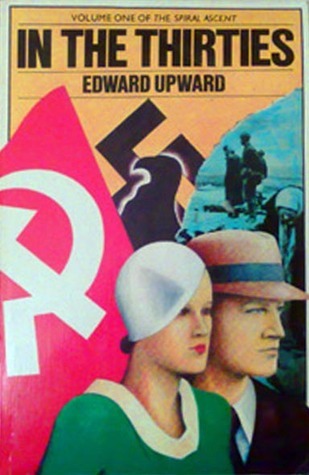
This is made clear by Upward when Alan Sebrill makes his first contact with the party, eventually helping a working-class comrade, Wally, with some election leafleting. Wally remembers his last job as a commissionaire at a cinema: “While I was there I first met a young chap from Cambridge – Symington his name was – who got me interested in philosophy.”59 Wally says he’s read some of Feuerbach and Dietzgen with Symington’s help: “I’ve tried Hegel too, but couldn’t get far, not even with help. Now I’m reading Adoratsky on dialectical materialism. Pretty good.”60 Wally agrees with Alan’s high opinion of Plekhanov’s Fundamental Problems of Marxism: “That’s a grand book… though they say now it has its faults. But that, with Lenin’s Materialism and empirio-criticism – well, you couldn’t find a better introduction anywhere to dialectical materialism.”61 This particular character isn’t whitewashed by Upward. In another scene, a meeting dealing with the disciplining of a comrade who has started to criticize the Soviet Union, Wally is shown as someone also capable of spouting the worst kind of CPGB dogma. After stating that he’s heard the comrade, Bainton, speaking elsewhere, Wally proclaims: “It was Trotskyite filth. The sort of lies about the Soviet Union that even the capitalist press might find too smelly to serve up. No party member who’d heard it could have had any doubts that Bainton… had gone right over to the other side. But perhaps that’s nothing to be surprised at, considering Bainton’s petit-bourgeois origin.”62
This raises up a delicate dialectic between the good and bad intellectual potentialities of this working-class character, which Upward puts like this: “Wally spoke with an intensity which Alan at first regarded as out of character but which on second thoughts he recognised as arising from the very essence of the man, from the central principle without which Wally’s other and gentler characteristics could not have continued to exist.”63
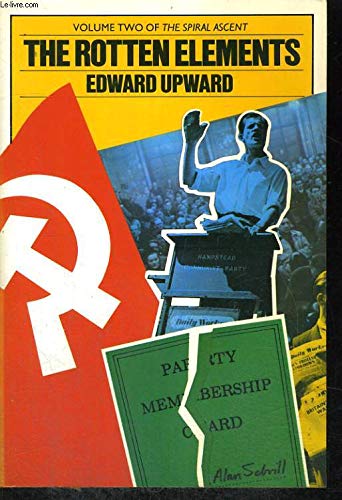
A similar process occurs in The Rotten Elements, where a CPGB factory worker, Bert Alldiss, speaks at borough meeting at which Elsie Sebrill has told the gathering why she doesn’t agree with the party’s support for the post-war Labour government and why it shouldn’t support the reformist government’s production drive. Alldiss suggests that the situation has changed from war-time (when the CPGB also supported a production drive), because the British government no longer wants an alliance with the Soviet Union and wonders “what the old style Marxists would have thought of this idea of socialism through exports.”64 Alldiss does qualify his opposition: “Unless we step up production the whole nation will be in the soup, workers as well as bosses. I can’t see how Elsie can get round that.”65 Upward records Alan Sebrill’s inner reaction to the intervention: “As [Bert] sat down, an admiration for him was strengthened in Alan, and a conviction that his good sense and honesty would never allow him to accept trickery from any party leader, if only he could be brought to recognise that it was trickery. But the recognition might take time, since he was less strong on theory than on practice, and since the leadership’s line – just because it was opportunist – appeared plausible enough in Britain’s immediate economic situation.”66 Upward is fully alive to the potential of working-class communists to rationalize their own political positions and that of the party, even if that potential isn’t always realized.
In ‘The Spiral Ascent’, Upward’s work also had definite experimental qualities, in particular, slowing down the narrative to a snail’s pace, taking objects out of normal ‘circulation’ and fixing them with a probing objective eye that means they take on stranger forms that their literal description. Such an approach is a challenge to works such as Lukács’s “Narrate or Describe?” (1936), which stresses the humanizing advantage of narration over the dead weight of ‘objective description.’ Upward attacks that stance from an alternative angle, pointing tentatively to how such objects are debased in more prosaic human circulation. For example, this is how an increasingly paranoid Sebrill reacts to his assessment that a party comrade, Les Gatten, is a police spy: “Feeling was abruptly brought to life in Alan. Like someone who coming into a kitchen sees a joint of cooked meat on a white dish in the middle of a table and sees also on the same dish and in contact with the meat something which is not meat, greenish-grey, part liquid, part solid, and which he instantly knows to be dog’s vomit, though it does not make him begin to retch until his mind has willy-nilly formed an idea of what the solid (fishy, spool-shaped, shaggily stringy) might have been before the dog’s stomach rejected it – Alan did not feel nausea until after he had comprehended fully what Gatten was.”67
However, unlike the examples in this article by Sommerfield and Calder-Marshall, the experimentation in Upward is not simply foregrounded and revealed as a formal subjectivism alongside obviously subjective accounts of working-class consciousness that can only advance by increments. Rather, the precise, observational qualities employed by these two works feed off the rationality and critical nature of the books’ characters, which is a much more plausible intellectual account of how people became communists and fought as communists; the experimentation on show is thus a diverse facet of the books’ total effect.
Aftermath
Upward was long out of the CPGB by the time these works had appeared, and it was too late for the party itself to resolve any of its literary problems. Lawrence and Wishart, the CPGB publisher, stopped producing novels by party members in the early 1960s. (By the 1980s, it was reissuing older party novels by figures such as Heslop and Sommerfield from the 1930s and such works had a certain cult appeal on the left.) The aesthetic issues of the party’s final decades need a lot more work in terms of investigation. The CPGB produced a statement in 1967 entitled ‘Questions of ideology and culture’ that saw the organization adopt a laissez-faire attitude to the arts and declined any kind of role in leading and directing artists.68 Broadly, the CPGB’s left opposed this shift in favor of older conceptions of vanguardism in the arts, but neither wing was in any real position to do anything given that the corrosion of the CPGB’s aesthetic was infused with the collapse of its political culture. The party did enjoy something of an ‘Indian summer’ in the late 1960s and 1970s due to its relative strength in the trade union movement. But this movement was politically weak. In the words of John McIlroy: “The picture suggested [from CPGB reports] was not a national community of political branches, but rather a shallower, personalized network of trade union militants – individuals or handfuls – largely concerned with industrial issues, sometimes with limited attachment to the CP and ‘deep-seated caution in showing the face of the party’.”69 These groupings were not enough to save the CPGB from decline or winking out of existence in 1991 and neither were they the cause of any radical re-casting of the British communist novel. Such shadowy networks were pictured in action in Herbert Smith’s A Morning to Remember (1962), set in a London power station. But the novel makes the CPGB effectively invisible in the workplace, in line with developing communist tactics to influence, not dominate, the trade unions. On one level, this did solve the issue of developing working-class subjectivity in that the relation to the communists was pushed into the background, while proletarian characters were still trapped in the ‘immediacy’ of the shop floor, waiting for a spark (in this case, a workplace emergency) to bring them to life.
The collapse of the CPGB’s political culture in the 1920s and 1930s and its associated mandate to mold the most advanced part of the British working class thus cast a very long artistic shadow. To have a Marxist organization that was even capable of sustaining a literary culture, however debased, now seems an almost impossible dream 100 years after the party’s foundation. But, despite the undoubted achievement in bringing proletarian voices into the literary world, the British communist novel can only ultimately be treated as an index of its political and cultural disintegration.
